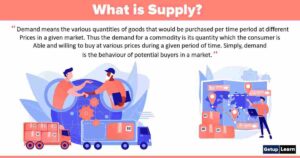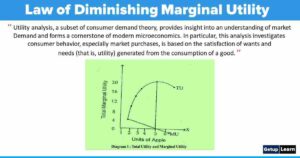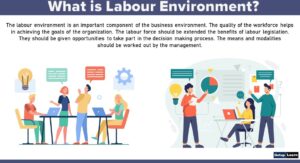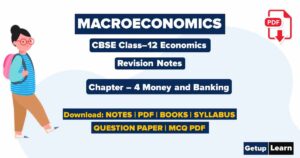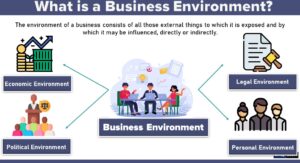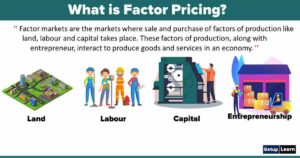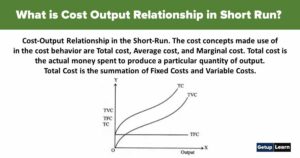Table of Contents
What are the Problems of Growth in Business Environment?
Growth is the main aim of a business. Not every growth is required, but it certainly comes with disruptions. In certain companies, adjusting to growth is a matter of inputting new employees and promoting experienced employees into management.
It is seen that in small companies like home businesses, growth is not exactly required because of low overhead costs. For them, growth relates to the opportunity to move out of the house and construct an independent concern.
Different Problems of Growth in Business Environment
The various different problems of growth in a business environment are as follows:
Unemployment
Unemployment is an important issue in the growth of the business. It basically locks people in poverty by generating economic growth in future, as people lose skills and become unemployable. It continues to vary, with an uneven amount of wealth owned by a small marginal population affecting social stability.
Growth becomes enough as direct policy measures are required to handle the underlying structural and demographic issues irritating the world’s labour markets.
Types of Unemployment
In order to have an idea of how we can get a potential level of output with 4.5% unemployment, we have to go through the three causes of unemployment:
Frictional Unemployment: It is a type of unemployment that is created by workers who are looking for their first job. This type of unemployment is good as without it, the economy could not produce much possible output. For the economy, this type of unemployment is required as it achieves its potential level of output.
Structural Unemployment: It is a type of unemployment of workers whose skills are not demanded by employers. They are unemployed as they have insufficient skills to get employment. Structural unemployment can result from changes in the structure of demand for labour.
Cyclical Unemployment: It is a type of unemployment that is caused by the insufficient total spending. This type of unemployment results from a recession in business. If there is less aggregate demand firms respond by producing less. Output and employment are reduced.
Poverty
Poverty is the term used to describe when a person is unable to meet their basic needs due to mainly economic constraints. The basic needs of a person are clean water, adequate food, shelter, health, and education. When a person does not have these basic needs due to economic constraints, they are considered to be living in poverty.
Recognizing that economic growth represents the single best answer to poverty, most governments and the development community have focused their efforts on creating the right conditions for growth.
In other words, rapid and sustained poverty reduction requires that all people in a country contribute to and benefit from economic growth. It also requires that economic growth be sustainable not only over time but with regard to natural resource deployment, so the needs of future generations can be met as well as those of today. This is our definition of sustainable development.
Social Justice in its essence is the culmination of a number of overarching themes and values with practices for the general good of all of society. It represents inclusive growth and fair play for every section of society with a focus on protecting the weaker groups of the population.
In India and in the developing world, social discrimination and injustice cannot be seen and understood as in the more developed world. This part of the world faces a large set of problems that have arisen from social injustice and the violation of human rights, sometimes out of necessity and simply due to ignorance.
Inflation
Inflation is the annual rate of increase in the price level. “Inflation” is commonly understood as a situation of a substantial and rapid general increase in the level of prices and consequent deterioration in the value of money over a period of time. The behaviour of general prices is measured through price indices.
The trend of price indices reveals the course of inflation or deflation in the economy. As Lerner says, “a price rise which is unforeseen and uncorrected is inflationary”.
Parallel Economy
Parallel Economy known as the underground, informal, or parallel economy, the shadow economy includes not only illegal activities but also unreported income from the production of legal goods and services, either from monetary or barter transactions. Parallel Economy connotes the functioning of an unsanctioned sector in the economy whose objectives run parallel, rather in contradiction with the aroused social objectives.
Environmental Problems Affecting the Growth of Business
The business provides social needs, goods, and services to the public to satisfy the demand of the consumer. Business activities also have become a major contributor to environmental destruction. The activities are consuming resources and processes in manufacturing need to be developed in order to save the environmentally sustainable development planning.
Key environmental issues affecting business include industrial waste, sustainable development of raw materials and water and air emissions. which we are going to discuss in detail:
Waste
Businesses that manufacture products create, at some point in the manufacturing process, manufacturing waste. Environmental laws and good environmental citizenship prohibit the indiscriminate dumping of manufacturing byproducts, so businesses must decide how best to dispense with them. Many implement recycling programs; others sell what they can of the waste to other manufacturers who use it in their own manufacturing processes as a raw material.
Sustainable Development of Raw Materials
All manufacturers use raw materials to put together their goods. When these raw materials are natural, such as wood, laws and good environmental citizenship require that the business take measures to replace what it uses. Christ-mas tree farms are a prime example, as sellers buy from growers who harvest and replant in order to keep from depleting entire forests of naturally occurring pine trees.
Emissions
Manufacturing processes often generate air and/or water emissions, which include particle or chemical-filled smoke, ash and particles and chemicals that seep into groundwater through run-off. Environmental protection laws require businesses to protect the environment from exposure to these emissions.
New regulations are implemented frequently that require retrofitting of manufacturing facilities with increased protections, such as screens of even finer gauges and pond liners of newer and safer materials. All of these measures are costly to businesses and affect businesses first by decreasing profit margins.



